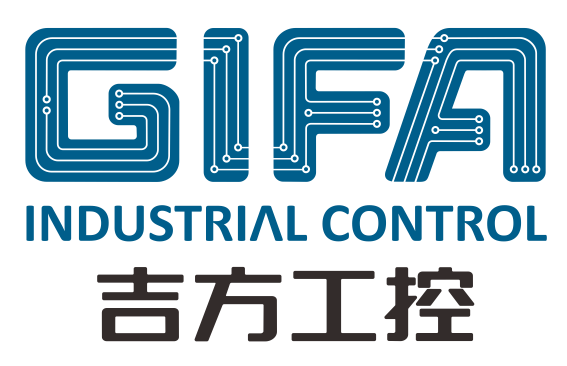The difference between industrial and commercial mainboards
In our work and life, what are the differences between industrial and commercial mainboards? What's so good about it? What's good about it? Generally, we can't give more systematic and perfect answers. Here, I will introduce the differences between the two in detail:
1. Dimensions:
ATX architecture is mainly used in commercial mainboards.
In order to adapt to a variety of application environment, the industrial motherboard has adopted a variety of size specifications of the motherboard, including ATX, micro-atx, LPX, POS and other specifications.
2. Expansion slot support:
Commercial motherboards often only provide 4 PCI slots. Due to the limitation of PCI specification, the driving capacity of PCI 4 has a considerable attenuation, so most commercial motherboards only provide 3 PCI slots.
Industrial motherboards, due to the industrial nature of the materials used in the design, can easily support PCI slots for 5 PCI, and will not cause PCI driver attenuation. It can also support high bandwidth pci-e devices. With ISA slot, it can realize good support for industrial ISA low speed acquisition card and data card. Embedded GPIO bus, can achieve GPI, GPO function.
3. Components used:
Due to the timeliness of the products pursued by commercial motherboards and the market positioning of their own products, the requirements for the selection of components generally only need to meet the service life of the system running for 2 to 3 years;
Industrial motherboard material selection will be selected after a long time, high requirements to verify the components, to ensure that products in harsh conditions high reliability requirements. For example, some such as in the server, high-end commercial motherboard appeared in the solid capacitor, closed inductor, etc., in the intelligent industrial control industrial level motherboard has a large number of use;
4. Operating environment:
Industrial motherboards often work in harsh environments (long working hours, harsh climate, damp, vibration, dust, radiation, high temperature, etc.), and these environments are not competent commercial motherboards, most of today's commercial motherboards can only run in a stable environment (short working time, indoor, normal temperature).
5. Life cycle:
The replacement of commercial main board market is very fast, so the general commercial main board only half a year to a year of life cycle;
In the industrial market, take intelligent industrial control as an example. As intelligent industrial control has a long-term strategic partnership with VIA and other manufacturers in Taiwan, the industrial-grade mainboard of intelligent industrial control can achieve a life cycle of up to 5 years, or even longer.
6. Product reliability:
Due to the market positioning of ordinary commercial mainboards, their products can only be used for CCC certification, Great Wall certification and civil electromagnetic compatibility certification required by electronic products.
Industrial motherboards are targeted at the industrial market, so we can meet the need of reliability. We will do CE EMC, FCC, QA realbility, CCC, vibration, drop and other industrial standard test and certification before the launch of each motherboard.
7. Manageability:
Commercial motherboards only provide the simplest remote management (through the connection network, using third party software, such as REAL VNC, PC ANYWHARE, etc.);
Industrial motherboards can provide similar remote connection management, but also can achieve remote unattended automatic switch machine function. Through the embedded IPMB, smnp-1000 module, the system can achieve real-time operation information management, record, send functions.
8. Customization:
Once the commercial motherboard is produced, it cannot be changed according to the market demand.
However, in the industrial field, for example, the industrial-grade motherboard of intelligent industrial control can flexibly meet the special needs of some customers and realize the customization of users, so as to better and more perfect match with the customer's demand environment.
9. Storage interface:
Commercial motherboards only offer common storage interface ides, SATA;
Industrial motherboards can provide IDE, SATA, SCSI, CF card, DOC and other storage interface requirements.
10. Protection function:
Commercial motherboards do not provide any protection functions;
Industrial motherboard through special design, in the event of a crash and other abnormal conditions, can achieve the automatic restart of the watchdog, anti-surge impact and other functions, to ensure the system in the harsh environment of high stability requirements.
11. Operating temperature:
Commercial motherboards can only be used in the outer environment between 5 degrees and 38 degrees;
Industrial motherboards can work stably between 0 degrees and 60 degrees, and even some industrial motherboards use wide temperature design, the temperature range can reach -20 degrees to 70 degrees.
12. Market size
Commercial main boards are mainly standard products, with large output and market size, which can be easily converted into other brands' main boards.
Industrial motherboards are mainly customized products, production and market size is relatively small, the cost of switching to other brands of motherboards is high;
Summary:
From the above comparison, we can clearly understand that industrial motherboards from the size, design, material, production, manufacturing, market size is based on the industrial era, to ensure the normal industrial system, high reliability. I believe that in the industry and people's lives more and more relevant, intelligent industrial control of the industrial motherboard will be more and more instead of commercial motherboard applications





